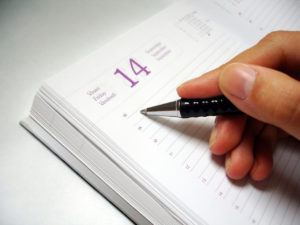 We’ve all walked out of a meeting and thought “Wow, that was a waste of time.” Perhaps the meeting had no clear purpose, the participants strayed off topic or the issues weren’t adequately resolved. It’s incredibly frustrating because it eats up time most of us don’t have.
We’ve all walked out of a meeting and thought “Wow, that was a waste of time.” Perhaps the meeting had no clear purpose, the participants strayed off topic or the issues weren’t adequately resolved. It’s incredibly frustrating because it eats up time most of us don’t have.
What’s even more frustrating is that those time-wasting experiences can usually be avoided if the guys or gals who call meetings just wrote an agenda. An action that takes just a few minutes of time, but can actually ensure that a meeting is a productive.
An agenda serves as the meeting’s blue print, making clear the overall objecting of the meeting and providing a structure to follow. Everyone knows what the goals are, the topics that will be discussed, and the time-frame the group has to discuss each issue. It keeps things moving at a steady clip, while ensuring that you cover the most pressing issues.
Don’t call meetings, even informal ones or one-on-ones, without first drafting and sharing an agenda. Use this simple template to write agendas that will keep the meetings running smoothly—and make the most of your precious time.
Heading that includes:
- Name of the meeting
- Date
- Start and end times
- Location
- List of invitees
Meeting objective
This clearly and succinctly states what you want to achieve during the meeting.
Old business
This will cover any updates, results from previous decisions and so on left over from other meetings. This step isn’t always necessary, and if you can forgo it, and simply send an update via email, do so. That way you can jump right into your most important topics. However, if the information is essential or relevant, go over it, but keep it short and to the point.
List the topics for discussion, one at a time
Start with the most important or time-consuming issues first. Include a brief reason why the topic is included in the agenda, along with any decisions you want to make or action items related to the topic. Assign a time-frame to discuss each topic to keep things moving, allowing time to wrap up the discussion with a list of next steps, delegated tasks and due dates.
Note: We recommend that you limit each meeting to no more than three topics, if possible. In fact, one topic per meeting is often preferable. Shorter, more focused meetings tend to be more productive than longer meetings that cover a range of topics.
Summarize action items and next steps
Very quickly state your agreed-upon action plan, and gain agreement from the team.
Open discussion
Schedule time at the end of the meeting to answer questions, address concerns, and tie up any loose ends. If you have time, you can also share other brief updates or make quick decisions. Just don’t dive into an in-depth topic at this point. Instead, follow up with individual employees after the meeting, or schedule another meeting with the group.
Photo Credit: http://www.freeimages.com/search/agenda

1 comments